World Bank and CCG launching the latest World Economic Prospects
June 16 , 2021
【English】
【中文】
On June 16, 2021, the Center for China and Globalization (CCG) and the World Bank co-hosted a webinar to discuss the World Bank’s June 2021 “Global Economic Prospects”, which presents forecasts and analysis for the global and Chinese economy in the second half of 2021. It was the only event in which the World Bank released and analyzed the report outside its headquarters in Washington DC, attracting nearly 700,000 viewers around the world.
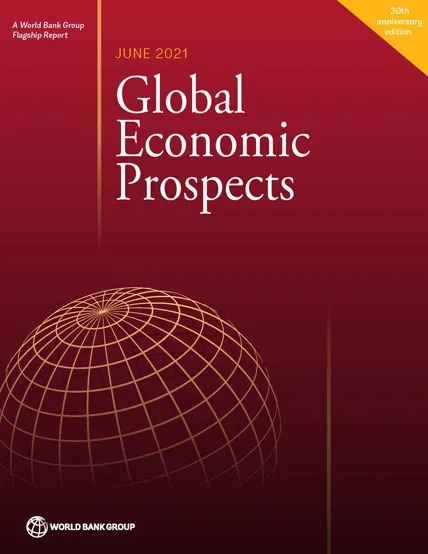
Global Economic Prospects” is the World Bank Group’s flagship report on global economic development and prospects, with a focus on emerging markets and developing economies emerging and developing economies. Reports are issued bi-annually, in January and June, and serve as an important reference for governments and businesses around the world to comprehend and decipher key trends in the global economy. This is the third time that the World Bank and CCG have partnered together for the launch of this report in China.
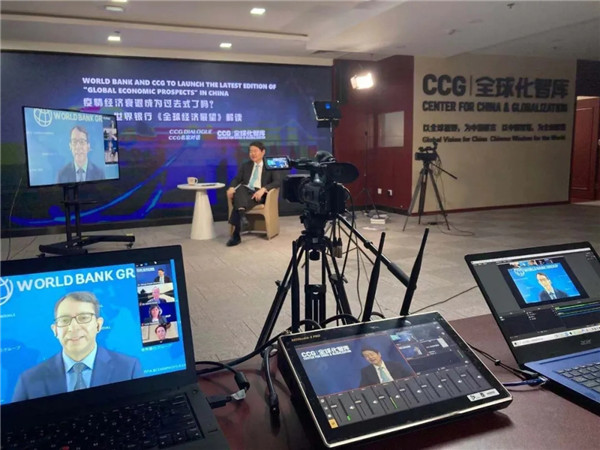
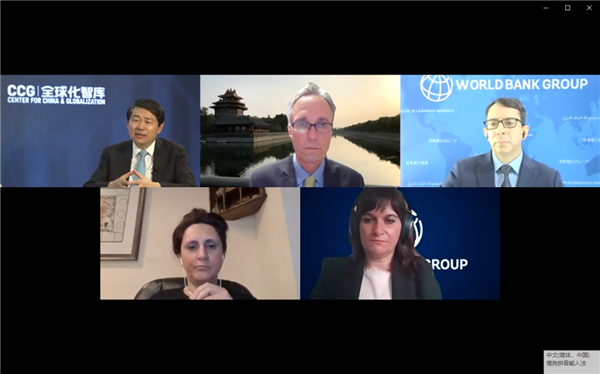
The discussion was joined by Wang Huiyao, CCG president and World Bank representatives Ayhan Kose, director of EFI Prospects Group, Martin Raiser, country director for China and Mongolia and director for Korea, and Ekaterine T. Vashakmadz and Lucia Quaglietti, senior economists at the World Bank.
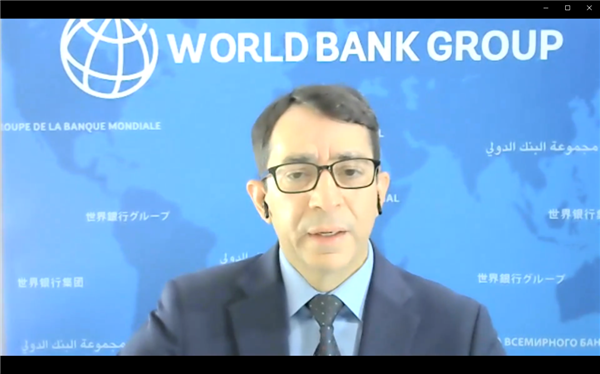
Ayhan Kose, director of the EFI Prospects Group, introduced the “Global Economic Prospects” series. The first report was published in 1991, when the global economy was going through a recession. As the world is now undergoing another global recession due to COVID-19, it is important to analyze and make forecasts for the global economy. The report has a global outlook, regional outlooks, and three analytical chapters that look at the possible growth outcomes beyond 2021, causes and remedies of high trade costs, and emerging inflation pressures around the world. In that order, Kose focused on three questions to illustrate key findings of the report. First, what are the near-term prospects for the global economy? Second, what are the implications of high trade costs? Third, what are the current policy priorities?
Regarding the near-term prospects for the global economy, Kose pointed out that there is no question that the global economy is bouncing back from last year’s record severe global economic recession. Financial conditions are benign for emerging markets and developing economies, borrowing costs have slightly increased but are still under control, and prices of many commodities have risen. The report forecasts that global economic growth this year will be around 5.6%. This will be the biggest global growth in nearly 50 years, and the fastest global recovery following a recession in more than 80 years. Kose predicted that the recovery of the global economy will remain strong but not evenly distributed. The growth of advanced economies will be around 5.4%. Large economies including China, the United States, and Europe will contribute greatly to the growth of the global economy. Further, emerging market and developing economies are up at around 6%. However, if China is taken out from the measurement, this figure will drop significantly. Further, per capita income losses will not be unwound by 2022 for about two-thirds of emerging market and developing economies. Among low-income economies, where vaccination has lagged, the effects of the pandemic have reversed poverty reduction gains and aggravated insecurity and other long-standing challenges.
Kose expects that by the end of 2022, almost all advanced economies’ per capita income will bounce back. However, it is predicted that the per capita income of only one-third of emerging markets and developing economies will have recovered and the prospects for recovery are closely related to vaccination. Therefore, Kose voiced concerns regarding economic growth at the global level, emphasizing that the poorest countries lack relevant policy support. To address the downside risks associated with continued COVID-19 flare-ups, the world is in need of a systematic way to vaccinate everyone globally in a timely manner. Moreover, he said that elevated debt levels and reassessment of inflation prospects could undermine the financial market. Food safety, politics and climate-related risks will all have impacts on global economic development. However, if the pandemic can be brought to an end as soon as possible through vaccination, we might see even higher growth at the global level, including emerging markets and developing economies.
In regard to trade costs, Kose pointed out that high trade costs are a crucial issue as they relate to income growth and the elimination of poverty. Therefore, we need to find ways to reduce trade costs and boost the global economy in the post global recession period. The report suggested that trade costs are much higher in emerging markets and developing economies than advanced economies, which makes it important to focus on costs in these economies. Border regulations, transportation, logistics infrastructure and costs, trade policies, and geographical distance can all play important roles in order to reduce trade costs.
When discussing major policy priorities, Kose advised that the first priority is to find ways to end the pandemic and accelerate vaccine distribution and deployment, especially in emerging markets, developing economies, and low-income countries. The second is finding ways to support the recovery, which requires tuning macro policies to maintain price stability and fiscal sustainability. This is critical to middle-term objectives, independence of central banks, and financial sustainability.
On the issue of medium- and long-term economic growth, Kose called for green, resilient, and inclusive development. Besides, tackling employment is essential to the recovery of the post-pandemic world and policymaking needs to adapt to the development of digital technology.
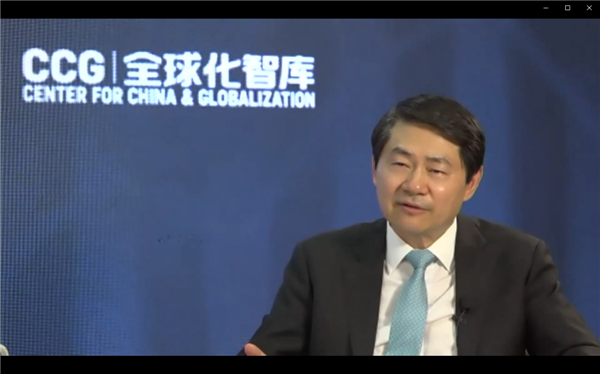
CCG President Wang Huiyao noted that as COVID 19 is still raging around the world, vaccines are being produced rapidly in developing countries, especially in China. With 800 million doses of vaccine in China and 1 billion vaccinations estimated, we can see the positive impact of vaccinations in containing the pandemic quickly and preventing any further outbreaks. The launch of the “World Economic Prospects” has far-reaching implications for the global economy as well as policymaking.
Wang stressed that the economy needs to get back on track. The global distribution of vaccines is currently very uneven. China, the US and Europe are doing well, whereas many developing countries are still struggling. For economic growth, we must focus on vaccine distribution. In this regard, China has provided vaccine aid to more than 80 countries and has pledged to provide 300 million doses of Chinese vaccines to meet the urgent needs of developing countries. A report released by the World Bank also called for global attention to help address this issue.
Wang mentioned that inequalities have intensified during the pandemic, which is harmful to globalization. The top 1% percent of the world’s population now owns 30 to 40 % of the wealth of the entire population. President Biden is now seeking to raise the minimum wage in the US, while the G7 is proposing a flat tax and a crackdown on tax heavens. These tax measures will bring benefits to the global economy. Further, infrastructure is also one of the key drivers of the global economy, and one of the reasons for China’s strong economic growth is its digital infrastructure.
On top of that, trade is also another major topic when discussing the global economy. Reducing trade costs, restoring free trade, renouncing protectionism, and carrying out trade reforms are much needed. The World Bank has not only reminded us to face the challenges of today, but also give the world confidence with advice on related policy priorities.
In terms of China, Wang stated that China is now the fastest-growing economy in the world as it has managed to get out of the pandemic earlier than many other countries. It has lifted 800 million people out of poverty and has made great efforts in human resource development.
Wang pointed out that 1.3 billion Chinese people are covered with medical care, and over 1 billion are entitled to social security benefits. The vast and ubiquitous infrastructure network allows people to travel to other places in just a few hours by high-speed rail. The synergy of transportation and consumption has driven China’s GDP, with the size of the digital economy now accounting for nearly 40% of GDP, contributing nearly 70% to GDP growth.
It is important for China to continue to open up its economy as well as accelerate its domestic and international economic development while ensuring a sustainable path and minding geopolitical risks. Tourism used to account for 5% to 10% of global GDP in the past, which has been slowed down by the pandemic. However, the Beijing Winter Olympics and Tokyo Olympics could be new opportunities for tourism as by then, more people would start to travel around internationally and more students would be going abroad to study.
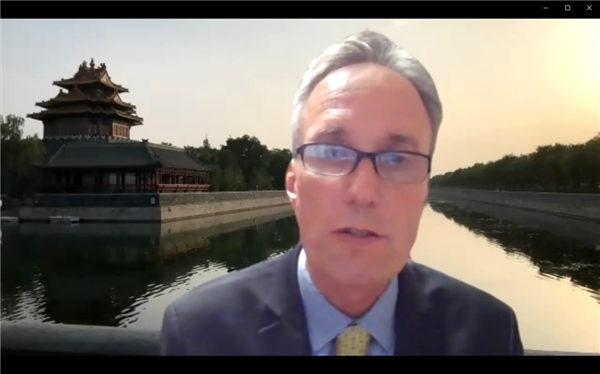
Martin Raiser, World Bank Country Director for China and Mongolia and Director for Korea first acknowledged China’s progress in controlling the virus at home, and he agrees with Kose that this lays a good foundation for the rapid economic recovery. Raiser says that the World Bank’s upgrading of the forecast for the economy of China is a reflection of China’s trajectory over the whole of the past year. He explained that China faced a very deep recession at the beginning when it was the epicenter of the pandemic, however due to the very rapid rebound in the first quarter of 2021, growth in 2021 was forecast to be about 8.5%. Behind those numbers there is a rotation of the sources of growth and a return to normality. Raiser says that the World Bank predicts that the Chinese economy would eventually recover by the end of this calendar year.
Raiser also points out that there is a shift from growth driven by public investment and net exports during the phase of recovery towards growth driven by domestic consumption and private investment. Behind that is the normalization of credit policy and fiscal policy. The very fast recovery of global trade for manufacturing and specifically, demand for some of the goods that China is producing, namely medical equipment and electronics, improved the profits of Chinese business. Thus, Chinese companies are now able to use these profits to invest, which would then allow the monetary authorities to restart their de-risking campaign and reduce some of the credit stimulus that they had injected into the economy. This will lead to tightening liquidity in those sectors that are dependent on public credit, namely infrastructure, local government financed vehicles, and to some extent, the real estate sector, but in other parts of the economy, Raiser expected private investment to remain quite strong. In the first quarter of 2021, what we saw was consumption returning to take up about two-thirds of the economic growth.
Nonetheless, Raiser also stated that risks associated with the unevenness of the global recovery, the fact that the pandemic is still not fully under control, and the risk in the continued tensions in international trade relations could all hamper investment confidence. These risks could also lead to continued local outbreaks which could derail or at least temporarily halt the consumption recovery. But in general, the World Bank thinks that the risks in China are largely controllable.
Regarding the green, resilient and inclusive recovery and development (GRID) that Kose mentioned, Raiser suggested that the Chinese economy is already starting to bounce back to pre-pandemic trends, this also means some of the challenges China was facing pre-pandemic have been brought back and are now on top of the policy agenda. These include productivity growth, which has been declining. The fact that there are still distortions in the allocation of credit and restrictions on the mobility of labor means that resources are not necessarily moving as swiftly and as flexibly to those companies with the best prospects to expand. This holds back both the diffusion of technologies and the diffusion of productivity throughout the economy and is potentially a barrier to faster productivity growth.
Further, Raiser pointed out that China’s population is aging rapidly and population growth is diminishing. Unlike in previous decades, it will no longer be a driving force for economic growth in China. For a while, the labor force will continue to grow, but China has a significant challenge to confront. Investment in human capital and the improvement in skills is going to be important because they drive the contribution that labor makes to economic growth. While at the frontier – in Shanghai and Beijing and in some of the other coastal cities – children coming out of school have an excellent education that rivals the best education in the world, which is much less the case in rural areas.
Raiser highlighted the continued opening up that China has done over the last 40 years, particularly in the area of opening some sectors to foreign investment. However, he suggests that China remains relatively restricted both to investment and trade in the service sector. Many of the restrictions relate to behind-the-border issues such as licenses and investment impediments. These factors have increased trading costs in China.
Raiser said China’s 2020 announcement on goals for reaching peak carbon and net zero are ambitious, and now need to be followed up with concrete actions. 2020 was a year of rapid recovery for the Chinese economy, but it was not a year of a green recovery. The carbon intensity of China’s economy has not declined in 2020 by nearly the same amount as it did in previous years. There was an increase in emissions last year even though growth was quite low and so that pattern needs to change and the economy needs to shift to greener sectors. Raiser thinks that this imperative is entirely compatible with faster productivity growth because, for instance, one of the areas in which China can go green is by shifting from heavy industry towards more digital technology-driven sectors. By doing so, China could improve productivity as well.
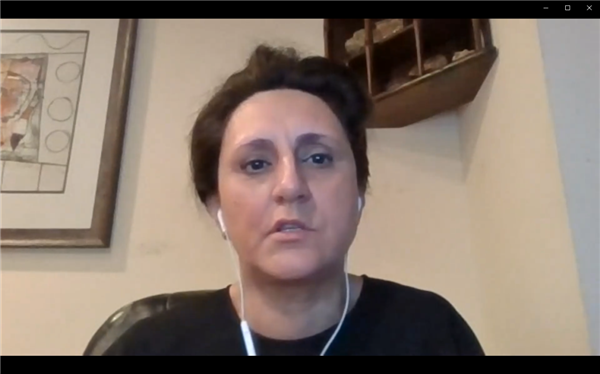
Ekaterine T. Vashakmadze, senior country economist in the Global Macroeconomic Trends Team of the Prospects Group at the World Bank, stated there are still various significant risks, and that the main risks revolved around two issues. Firstly, the pandemic has not yet ended, especially facing the threats of the change of seasons and unevenness of vaccination. The pandemic is still lingering, although it has declined at the global level. Asia is struggling with high cases. It was India before, and now it also includes Malaysia, Thailand, The Philippines and Indonesia. The second risk is financial risk. During the pandemic, countries benefitted from very relaxed financial conditions, but this may not last because we are already seeing higher inflation. However, if inflation expectations are going to be de-anchored, the expected tightening of financial conditions may occur earlier and in the presence of global elevated higher debt. This situation could greatly harm the economy.
Regarding economic growth, Vashakmadz listed three related factors. The first is the impact on human capital. That’s very important because the pandemic brought impacted the world unevenly, as poorer people suffered more.
In countries with large populations, dividends mainly come from the population. She hopes that the demographic dividend will bring strong growth in the future. The second issue is women. The World Bank has estimated that, for example, Asian women are suffering more from domestic violence. 24% of respondents of the questionnaire in some countries, and in some countries even close to 80%, said that they had experienced some degree of domestic violence during the pandemic.
Vashakmadz suggested that women represent untapped potential, as women’s longing for justice and rights will grow thus their potential will be further realized. The third is small businesses. We know that lot of productivity comes from small businesses, and those are the essential fabric for every country’s economy. Therefore, she said rebuilding small businesses is important for future growth.

Lucia Quaglietti, senior economist with the Prospects Group of the World Bank, stressed reducing trade costs as the primary policy for developing economies and low-income countries to reinvigorate growth and productivity. There is enormous potential in such reforms – for example, some studies of the World Bank from 2020 suggested that a 1% increase in trade increases per capita income by 0.2%.
World Bank and CCG launching the latest World Economic Prospects
Dialogue Between Yale Historian Valerie Hansen & Dr. Wang Huiyao
Conversation with Martin Wolf, Chief Economics Commentator at FT
CCG Dialogue with Harvard Professor Anthony Saich
CCG Dialogue with Joseph S. Nye Jr.
A Dialogue Between Graham Allison and Wang Huiyao
A Dialogue Between Thomas L. Friedman and Wang Huiyao
CCG’s dialogue with Prof. Kerry Brown from King’s College London






